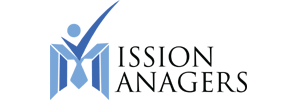Nonprofit organizations heavily depend on grants to finance all or part of their operations, programs, and initiatives. However, winning and sustaining grant funding requires regular, accurate, and transparent reporting, which, unless appropriate data management practices are put in place, is a nightmare to perform. Nonprofit data management forms the backbone of effective grant reporting, whereby the right information is guaranteed to be available when required.
We will examine five ways effective data management supports creating a seamless grant reporting process for nonprofits.
Centralize Your Data
One of the major challenges faced by nonprofits is dispersed data. Tracking and verification become increasingly difficult when information becomes stored across spreadsheets, documents, or even different departments in general. A nonprofit’s centralized data management system stores everything necessary in one place, creating a single source of truth.. This can save a lot of time and reduce the likelihood of errors. For example, instead of manually creating statistics about programs by staff looking through multiple folders, it can instantly pull up the most accurate and current data. This centralization ensures consistency within your reports and projects a professionally organized image to the grant funders.
Ensure Data Accuracy Through Quality Control
Data accuracy is of paramount importance in nonprofit data management. Reporting incorrect or inconsistent information can damage credibility with funders. To prevent this from happening, nonprofits should implement some data quality control methods, including frequent audits and various validation checks. For instance, you might plan monthly data reviews to help discover discrepancies and errors before they creep into grant reports. Reliability can also be improved using tools that flag duplicate entries or missing data. All the statistics, records, and financial figures must correctly reflect your organization’s activities and outcomes.
Automate Routine Processes
Data entry, report building, and other regular activities are extremely time-consuming and expose nonprofits to human-made mistakes. By automating these processes, nonprofits free their valuable time and amplify the accuracy of grant reporting. For example, software solutions, including CRM platforms or grant management systems, allow nonprofits to create comprehensive reports by pulling data automatically from multiple sources with minimum manual input. Besides, automation will let your team pay more attention to the strategic tasks of adapting grant applications or establishing relationships with funders rather than getting bogged down in routine administrative work.
Integrate Data Across Platforms
Nonprofit organizations often operate on multiple platforms: donor databases, financial systems, and project management tools. When all these systems don’t interact with each other, it leads to data silos that could be very problematic for grant reporting. Integrating your data from across the platforms will ensure that each information flows easily, giving a comprehensive and holistic overview of your organization’s performance. Having your donor management connected to financial reporting tools helps you more easily track where donations are being allocated and then track the outcomes for those in grant reports. Besides streamlining reporting, this integration lets funders perceive the big picture behind your organization’s work.
Training of Staff on Best Practices
Even the most advanced data management systems are only as powerful as their users. Truly, investment in training your team to use these tools and follow best practices to achieve efficient nonprofit data management is essential. Such workshops, online tutorials, or even one-on-one training sessions teach staff how to input and manage data, perform analyses on those data, and engage in other activities aimed at the project’s core. For example, teaching staff to standardize the data entry format prevents mistakes and inconsistencies. It helps broaden views among team members that data management is a shared responsibility. One feels accountable for and in charge of ensuring long-term success with grant reporting.
Conclusion
Good grant reporting keeps the money coming in with complete transparency; effective nonprofit data management is key. Centralization of data in an automated process will facilitate quality control, integration across platforms, and staff training to increase report accuracy and efficiency. If grant funders can see organized, reliable reports, they are more likely to trust and continue supporting such an organization. Investing time and energy in better nonprofit data management pays off in many ways, from simplified reporting and improved credibility to increased effectiveness. Remember: managing data is about fulfilling reporting requirements and building a long-term foundation for success.

